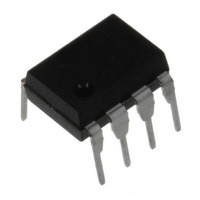NJM4151D NJR, NJM4151D Datasheet - Page 3

NJM4151D
Manufacturer Part Number
NJM4151D
Description
IC V-F/F-V CONVERTER 8DIP
Manufacturer
NJR
Type
Volt to Freq & Freq to Voltr
Datasheet
1.NJM4151D.pdf
(10 pages)
Specifications of NJM4151D
Frequency - Max
100kHz
Full Scale
±100ppm/°C
Linearity
±1%
Mounting Type
Through Hole
Package / Case
8-DIP
Supply Voltage (max)
22 V
Supply Voltage (min)
8 V
Maximum Operating Temperature
+ 85 C
Minimum Operating Temperature
- 40 C
Full Scale Frequency
100 KHz
Mounting Style
Through Hole
Operating Supply Voltage
9 V, 12 V, 15 V, 18 V
Lead Free Status / RoHS Status
Contains lead / RoHS non-compliant
Available stocks
Company
Part Number
Manufacturer
Quantity
Price
Company:
Part Number:
NJM4151D
Manufacturer:
JRC
Quantity:
5 510
Company:
Part Number:
NJM4151D
Manufacturer:
MOT
Quantity:
5 510
Part Number:
NJM4151D
Manufacturer:
JRC
Quantity:
20 000
■ PRINCIPLE OF OPERATION
Single Supply Mode Voltage-to-Frequency Conversion
power supply. Refer to Figure 1, the simplified block diagram. The NJM4151 contains a voltage comparator, a one-shot,
and a precision switched current source. The voltage comparator compares a positive input voltage applied at pin 7 to the
voltage at pin 6. If the input voltage is higher, the comparator will fire the one-shot. The output of the one-shot is
connected to both the logic output and the precision switched current source. During the one-shot period, T, the logic
output will go low and the current source will turn on with current I.
source has injected an amount of charge Q = I
such that V
the R
This completes one cycle. The VFC will now run in a steady state mode. The current source dumps lumps of charge into
the capacitor C
frequency at which the system runs will be proportional to the input voltage.
1. Many users, though, have expressed the desire to understand the workings of the internal circuitry. The circuit can be
divided into five sections: the internal biasing network, input comparator, one-shot, voltage reference, and the output
current source.
diode Q39. The NPN transistor Q38 senses the zener voltage to derive the current reference for the multiple collector
current source Q41. This special PNP transistor provides active pull-up for all of the other sections of the NJM4151.
ground-sensing input which is necessary for VFC operation at low input voltages, NPN transistors Q5 and Q6 convert the
differential signal to drive the second gain stage Q7. If the voltage on input pin 7 is less than that on threshold pin 6, the
comparator will be off and the collector of Q7 will be in the high state. As soon as the voltage on pin 7 exceeds the voltage
on pin 6, the collector of Q7 will go low and trigger the one-shot.
Ver.2004-10-25
When this condition is achieved the current source remains off and the voltage V
In this application the NJM4151 functions as a stand-alone voltage to frequency converter operating on a single positive
At the end of the one-shot period the logic output will go high and the current source will shut off. At this time the current
The NJM4151 VFC is easy to use and apply if you understand the operation of it through the block diagram, Figure
The internal biasing network is composed of Q39-Q43. The N-channel FET Q43 supplies the initial current for zener
The input comparator section is composed of Q1-Q7. Lateral PNP transistors Q1-Q4 form the special
B
-C
B
network. This process continues until V
B
> V
B
I
at rate fast enough to keep V
, the comparator again fires the one-shot and the current source injects another lump of charge, Q, into
Figure 1. Simplified Block Diagram, Single Supply Mode
B
0
≥ V
T into the network R
B
> V
I
. Since the discharge rate of capacitor C
I
.
B
-C
B
. If this charge has not increased the voltage V
B
decays until V
B
is proportional to V
B
is again equal to V
B
/R
- 3 -
B
, the
B
I
.





















